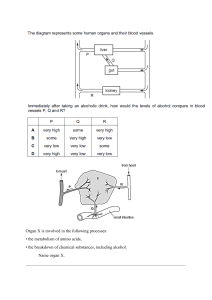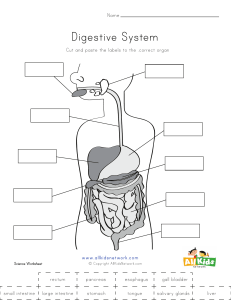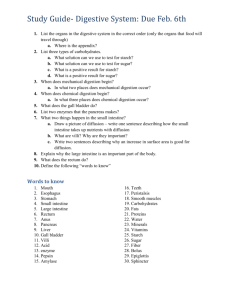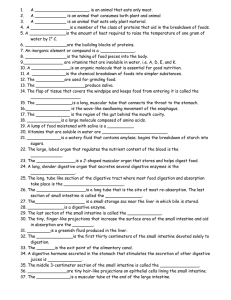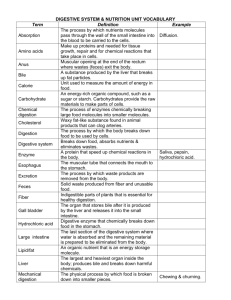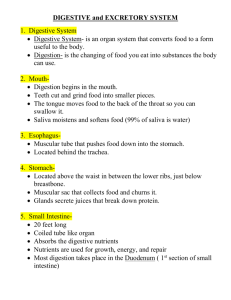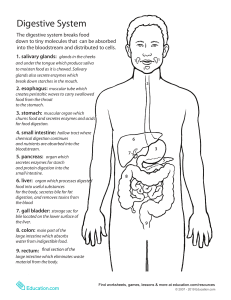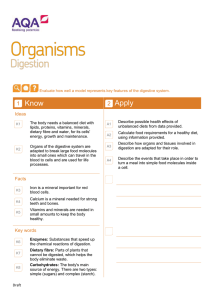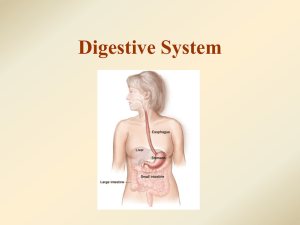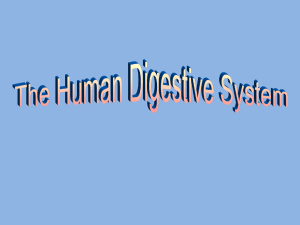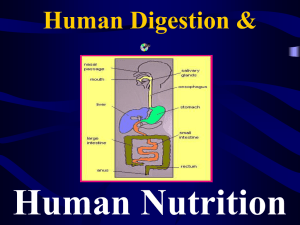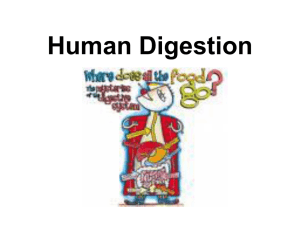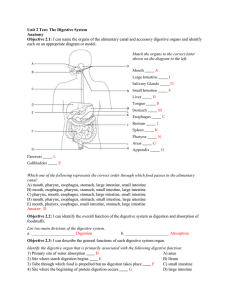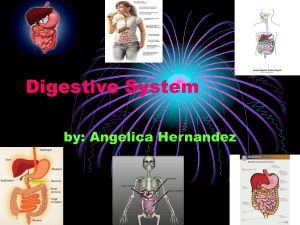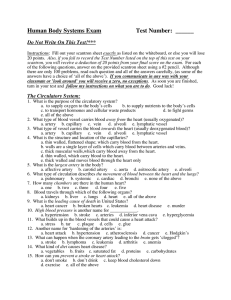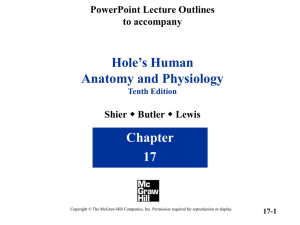HBS Ch.2 Sec.4
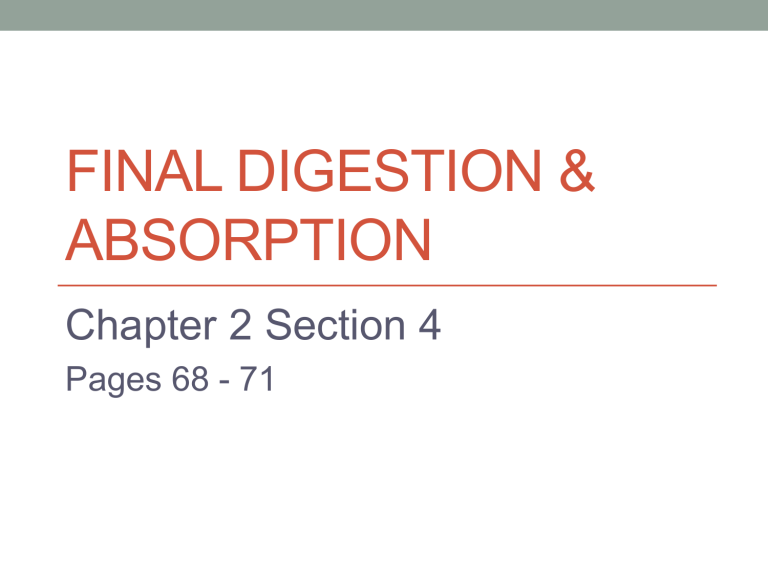
FINAL DIGESTION &
ABSORPTION
Chapter 2 Section 4
Pages 68 - 71
Small Intestine: The part of the digestive system where most chemical digestion takes place.
*6 meters long
*2/3 of your digestive system
Almost all chemical digestion and absorption of nutrients take place in the small intestine.
Liver: the largest, heaviest organ
*It breaks down medicines
*Helps eliminate nitrogen from the body
*Produces bile (Which breaks down fat)
Bile: A substance that breaks down fat particles. It’s made in the liver, stored in the gall bladder and then used in the small intestine.
Gall Bladder: The organ that stores bile.
Pancreas: Triangular organ under the stomach.
*It produces enzymes for the digestive system
*These enzymes break down starches, proteins, & fats.
Villi: Millions of finger shaped structures lining your small intestine.
Large Intestine: The last section of the digestive system.
*1 1/2 meters long
*Shaped like a horseshoe
*Contains helpful bacteria
*Absorbs water into your blood
As material moves through the large intestine, water is absorbed into the bloodstream. The remaining material is readied for elimination from the body.
Rectum: Short, muscular tube that compresses waste into a solid form.
Anus: Muscular opening at the end of the rectum.
